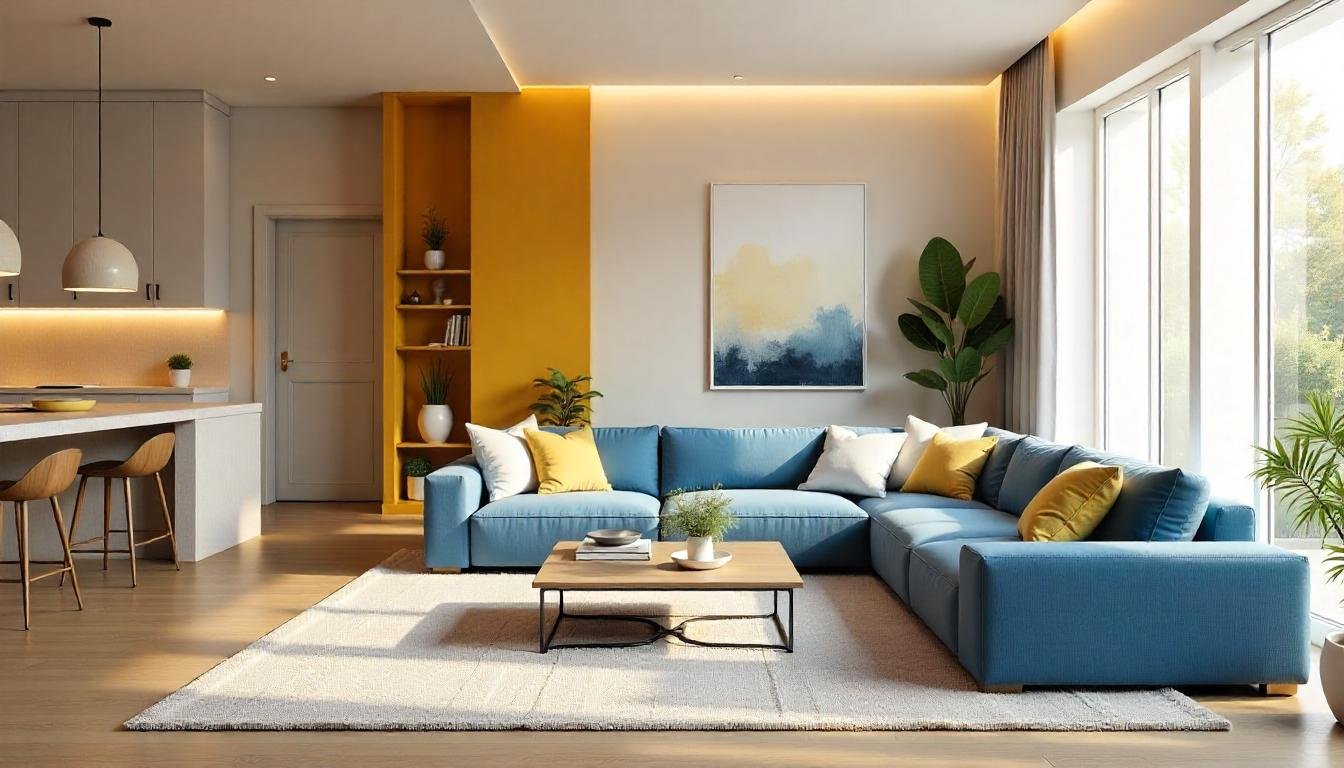Clean lines, open spaces, and a “less is more” philosophy—minimalist style interior design is all about simplicity with purpose. Rooted in functionality and refined aesthetics, minimalist design reduces clutter and emphasizes intentional living. It’s not just a style; it’s a mindset that creates calm, clarity, and balance in a space.
Whether you’re decorating a studio apartment or planning a kitchen remodel, minimalist interiors offer timeless elegance and a serene environment. For tailored execution, a professional Kitchen Interior Design Company in Bangladesh can help design a kitchen that feels open, modern, and efficient.
Of course, even minimal spaces need the right lighting. The quality, placement, and design of light fixtures can dramatically affect the atmosphere. Brands like Inayat Lighting offer sleek, functional lighting solutions that blend effortlessly into minimalist homes.
What Is Minimalist Interior Design?
Minimalist interior design focuses on the idea that less is more. Every piece of furniture, decor, and lighting must serve a purpose—whether functional or visual. The goal is to eliminate excess and let essential elements shine.
This style draws inspiration from Japanese Zen philosophy and Scandinavian design. It emphasizes:
- Simplicity
- Functionality
- Clean lines
- Open spaces
- Neutral color palettes
Key Features of Minimalist Style Interior Design
1. Neutral Color Palettes
Minimalist interiors lean toward muted tones such as:
- White
- Beige
- Grey
- Soft black
- Earthy neutrals
Accent colors are used sparingly, often through art, pillows, or natural elements like plants.
2. Functional Furniture
Furniture in minimalist spaces is:
- Simple in shape
- Multipurpose
- Often low-profile
Think of a clean-lined sofa with hidden storage or a dining table that doubles as a work desk.
3. Clutter-Free Surfaces
Minimalism embraces the idea of visual silence. Countertops, shelves, and tables are free from unnecessary objects, allowing the eye to rest and the mind to focus.
4. Open Floor Plans
A hallmark of minimalist design is the use of open layouts. Fewer partitions and more open space make a room feel larger and more breathable.
5. Quality Over Quantity
Minimalist design isn’t about cheap or bare—it’s about carefully choosing well-crafted pieces that stand the test of time. A single quality item can have more impact than a room full of decor.
6. Natural Light & Soft Lighting
Minimalist interiors rely heavily on natural light. Windows are left bare or lightly dressed with sheer curtains. Artificial lighting should be soft and layered to create a gentle atmosphere. Fixtures from Inayat Lighting can elevate minimalist homes with elegant simplicity.
Materials Commonly Used in Minimalist Interiors
- Wood (light oak, walnut): Adds warmth
- Glass: Keeps spaces open and airy
- Metal (matte black, brushed gold): Adds contrast
- Stone (marble, concrete): Offers natural texture
- Textiles (linen, cotton, wool): Brings softness and warmth
These materials are often left unpolished or with natural finishes to maintain an organic, untouched look.
Benefits of Minimalist Interior Design
1. Creates a Calm Environment
Clutter can lead to stress. A minimalist home fosters peace and mindfulness.
2. Easier to Clean and Maintain
Fewer items mean fewer things to dust, clean, and organize.
3. Saves Money Over Time
By focusing on what’s necessary and valuable, you avoid impulse purchases and invest only in what lasts.
4. Enhances Functionality
Each space serves a clear purpose, and every element supports it.
5. Timeless Aesthetic
Minimalist interiors don’t follow fleeting trends—they’re classic, enduring, and easy to update.
Minimalism in Kitchen Design
A minimalist kitchen isn’t just stylish—it’s practical. Clear counters, seamless cabinets, and hidden appliances make cooking easier and cleaning faster.
Key features include:
- Handleless cabinets
- Integrated appliances
- Neutral-toned finishes
- Under-cabinet lighting
- Minimal open shelving
When done right, your kitchen becomes a sanctuary of efficiency and calm. A trusted Kitchen Interior Design Company in Bangladesh can help create a streamlined layout that reflects your lifestyle while maximizing space.
How Lighting Supports Minimalist Design
Lighting is critical in minimalist spaces. It defines zones, enhances textures, and adds warmth without relying on excessive decoration.
Use:
- Recessed lighting for clean ceilings
- Pendant lights for kitchens and dining areas
- Wall sconces for soft ambient light
- Floor lamps with slim silhouettes
For minimalist-friendly lighting that enhances form and function, explore thoughtfully curated options from Inayat Lighting.
Tips for Creating a Minimalist Space
- Start with Decluttering Remove what you don’t use or love. Keep only what adds value or joy.
- Choose Multipurpose Furniture Opt for designs that serve more than one function—like an ottoman with storage or a desk that folds away.
- Limit Your Palette Stick to two or three main colors. Use texture, not color, for variety.
- Use Decor Sparingly Choose one or two impactful art pieces instead of cluttering walls.
- Let Spaces Breathe Avoid overfilling rooms. Leave intentional empty space—it’s part of the design.
- Prioritize Lighting Emphasize natural light and choose fixtures that blend into the space while still making a statement.
Common Mistakes to Avoid
- Confusing minimalism with emptiness: The goal isn’t to create a lifeless space, but a meaningful one.
- Overdoing white: While white is common, mixing in wood tones or soft colors adds warmth.
- Neglecting comfort: Minimalism should be inviting, not cold. Add comfort with rugs, cushions, and warm lighting.
- Lack of personality: Personal items can be included—just curated carefully and with purpose.
Minimalist Design Trends in 2025
Here’s what’s trending in the minimalist space this year:
- Japandi Style: A mix of Japanese minimalism and Scandinavian functionality
- Sustainable Minimalism: Eco-friendly materials and conscious living
- Soft Minimalism: Rounded edges, warm tones, and cozy textiles
- Open Kitchens with Hidden Storage
- Black Accents: Contrast in neutral spaces for bold visual impact
Conclusion
So, what is minimalist style interior design? It’s about creating calm, intentional spaces that are both beautiful and functional. With clean lines, neutral palettes, and purposeful decor, minimalist design offers a breath of fresh air in a cluttered world.
Ready to bring minimalist sophistication to your kitchen or home? Collaborate with a skilled Kitchen Interior Design Company in Bangladesh to ensure every detail aligns with simplicity and functionality. And to bring clarity and comfort through light, explore elegant minimalist fixtures from Inayat Lighting.






